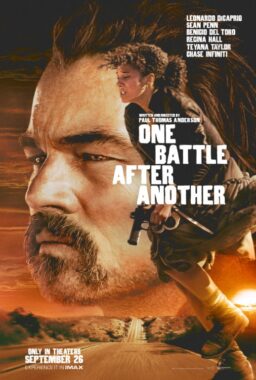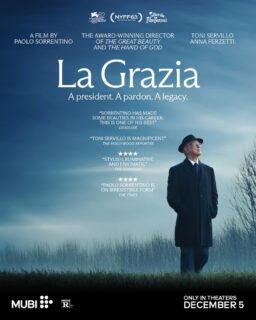Hollywood has given the world three movie genres: Westerns, musicals and film noir. The first two are on the endangered species list, but noir is undergoing an explosive rebirth of popularity – even though the average moviegoer doesn’t know quite how to pronounce it, or what it is.
Film noir: The film of darkness and the night, of shadows and mean streets, of losers, grifters and bottom-feeders. The term was first applied by French film critics in the 1950s to a kind of American film they treasured even while it was scorned in its homeland.
Often disreputable, the film noir was usually about crime, but it didn’t glorify criminals the way 1930s gangster pictures did. Instead, its characters got involved in crime out of desperation, accident, weakness, or sheer bad lust.
If a woman was involved, she was temptress as often as victim. The look of the pictures was distinctive: Their characters lived in shadows and at night, in a world of neon, cigarettes and cars with running boards. The women wore slinky, low-cut dresses and the men wore suits, ties and fedoras. And they liked to crack wise.
Not since its heyday (roughly from 1940 to 1955) has film noir been more popular than it is right now.
“Pulp Fiction” obtained its very title from the literature that spawned the genre. And just this year, Hollywood has released such noir items as “Amateur,” “Exotica,” “Destiny Turns On the Radio,” “Kiss of Death,” “Little Odessa,” “Devil in a Blue Dress,” “Shallow Grave,” “Love and Human Remains,” “Bulletproof Heart,” “Seven,” “Swimming With Sharks,” “The Underneath” and “Strange Days.”
“Leaving Las Vegas” and “Things to Do in Denver When You're Dead” are opening soon. And of course last summer’s biggest hit, “Batman Forever,” had a strong dose of noir in its look and atmosphere; of all the comic heroes, “Batman” is the quintessential noir figure.
Not all of those titles fit easily within the classic definition of film noir. That’s because noir has evolved in recent years; it’s not simply nostalgia any more, it’s also a developing style that seems to grow out of these times, rather than simply recalling the 1940s.
Films like “Devil in a Blue Dress,” with Denzel Washington as a post-World War II Los Angeles private eye, are obviously trying to evoke earlier times. But “Destiny Turns On the Radio” and “Amateur” are, in their own ways, reacting against noir traditions. And “Strange Days” is part of an apocalyptic noir tradition ranging back to “Blade Runner.”
There are, in fact, three strains of noir all at work right now: Classic noir: These movies respect the conventions of the genre as severely as Westerns or Dead Teenager Movies do. They begin with costume and set design, they use smoky jazz scores, and the characters are led to their destinies by their own weaknesses. Deadpan noir: These are movies by directors who want you to know they could make a classic noir if they wanted to, but they’re too hip to play it straight. A characteristic of these films is the way characters speak absurd dialogue with poker faces, as if not aware it’s funny. Deadpan noir also likes deliberately implausible plot construction. Neo noir: These films come out of the way we live now. Just as 1940s noir was generated by the sense that old values were crumbling, that good would not always win over evil, that men were weak and temptation was strong – so does neo noir see the same helplessness and despair at work today.
“Leaving Las Vegas,” a movie that will open in November, is the best example of classic noir I’ve seen since “The Last Seduction.” Not that it’s similar; it’s a completely different kind of film, owing more to “The Lost Weekend” than “Double Indemnity” in its story of a movie executive (Nicolas Cage) who has lost his job and his family, and is deliberately drinking himself to death.
He moves to Vegas because the liquor stores never close there, and meets a hooker (Elizabeth Shue) who for some reason falls in love with him. “I’m warning you right now,” he tells her, “that you can never, ever, ask me to stop drinking.” The plot is operatic in its inevitability and intensity, its world is noir to its very core, and the final scenes are heartbreaking in the way they embrace human weakness and understanding. Atom Egoyan’s “Exotica,” currently a hot title in the rental stores, is the best recent example of deadpan noir.
It is a movie that has many noir elements (crime and temptation, tragedy buried in the past, a sleazy nightclub as the arena for much of the action). But they are rearranged in such a way that working out the plot is a challenge. All of our questions are answered, but belatedly, and we jump to a lot of conclusions that aren’t correct.
The central characters are a man who is drawn inexorably to a table-dancing club and a young woman who works there. Are they what they seem? Not at all. Is their relationship as we think? Not even remotely.
The movie leads us down one noir path after another, only to surprise us at the end. The characters play their scenes absolutely straight, while the plot has them turning cartwheels.
Kathryn Bigelow’s “Strange Days,” which just opened, is an example of neo noir. It, too, has the nightclubs and the sad, doomed characters. It has a classic noir hero in the Ralph Fiennes character, who peddles Virtual Reality tapes but could just as easily be selling smut or dope. But its themes are current: racial unrest, police corruption, technology that dehumanizes. It reflects a noir conviction that the future will be worse, not better, and that society is spiraling down into violence and anarchy.
Of the three kinds of noir, I like deadpan noir the least because it seems to deny the validity of its vision. It maintains an ironic distance from its own central impulse: It wants to be a melodramatic morality play, but is too conscious of the conventions of melodrama and too suspicious of morality. It keeps reassuring us that it’s in on the joke.
This ambiguity can lead to very bad movies, like “Destiny Turns On the Radio.” It is very tricky to make a good deadpan noir film, but “Exotica” does it, and so does the late autumn release “Things to Do in Denver When You’re Dead.”
Classic noir of course owns the hearts of true film lovers. “When we made them, we just called them B pictures,” Robert Mitchum drawled two years ago at the Virginia Festival of American Film, after the screening of his “Out of the Past,” one of the best noirs ever made.
But you can find the soul of cinema in their laconic dialogue, their black and white photography, and visual compositions that trap the characters in sharp angles and crush them with shadows.
As for neo noir, I think it is just getting started.
Bill Clinton was quite right when he said we are all in a funk. We are. The nation is as divided and uneasy as I can remember, and this time it is not an external problem like Vietnam that concerns us, but a gut feeling that we are morally overdrawn and will have to pay up.
Noir thrives on pessimism and fear – and on guilt, the feeling that we have ourselves to blame for our troubles. A movie like “Strange Days” is flawed by an implausible ending and a contrived plot, but so were many of the great noir films. Like them, it has something exactly right at its core, a feeling of growing apprehension.
But is there hope? Oh, yes, noir can contain hope. Go see “Leaving Las Vegas.” The ending is very sad but very hopeful, because it says that even in our worst travails we can find a way to be gentle with one another.











